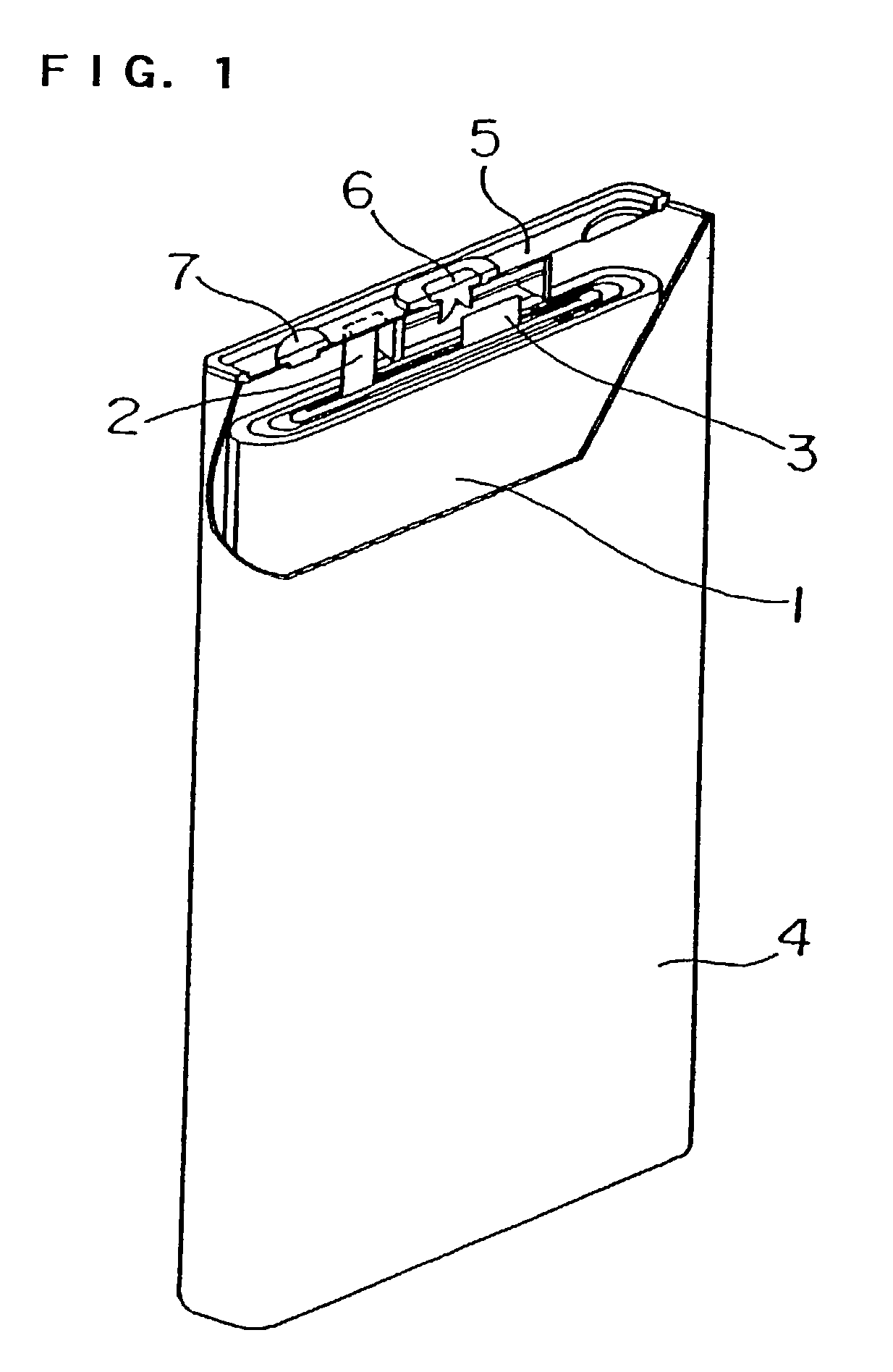Positive electrode active material for non-aqueous electrolyte secondary cell and cell using the same
a technology active materials, which is applied in the direction of cell components, conductors, and nickel compounds, can solve the problems of non-aqueous electrolyte secondary batteries, high electromotive force and high energy density, and decrease in discharge capacity during charge/discharge cycles, so as to suppress the effect of battery thickness increas
- Summary
- Abstract
- Description
- Claims
- Application Information
AI Technical Summary
Benefits of technology
Problems solved by technology
Method used
Image
Examples
example 1
(i) Fabrication of Positive Electrode
[0058]A positive electrode active material having the composition formula (Li0.95Al0.05)(Co0.9Al0.1)O2 was synthesized in the following manner.
[0059]An aqueous solution containing cobalt sulfate at a concentration of 0.9 mol / l and aluminium sulfate at a concentration of 0.1 mol / l was prepared. While adding dropwise an aqueous solution of sodium hydroxide such that the pH of the above solution was 10 to 13, the respective materials were continuously supplied to a reaction vessel thereby to synthesize a precursor comprising a hydroxide (Co0.9Al0.1)(OH)2.
[0060]The obtained precursor, lithium carbonate and aluminium hydroxide were mixed such that the molar ratio of the total amount of cobalt and aluminium in the precursor, the amount of lithium in lithium carbonate and the amount of aluminium in aluminium hydroxide was 1:0.95:0.05. After temporarily baked at 600° C., the mixture was pulverized and subsequently baked again at 900° C., followed by pulv...
example 2
[0068]A precursor comprising a hydroxide (Co0.9Cu0.1)(OH)2 was synthesized in the same manner as in Example 1 except for the use of copper sulfate in place of aluminium sulfate.
[0069]Further, the precursor was used to produce a positive electrode active material (Li0.95Cu0.05)(Co0.9Cu0.1)O2 in the same manner as in Example 1 except for the use of copper carbonate in place of aluminium hydroxide, and this was used to fabricate Battery 2A similar to Battery 1A.
example 3
[0070]A precursor comprising a hydroxide (Co0.9Zn0.1)(OH)2 was synthesized in the same manner as in Example 1 except for the use of zinc sulfate in place of aluminium sulfate.
[0071]Further, the precursor was used to produce a positive electrode active material (Li0.95Zn0.5)(Co0.9Zn0.1)O2 in the same manner as in Example 1 except for the use of zinc oxide in place of aluminium hydroxide, and this was used to fabricate Battery 3A similar to Battery 1A.
PUM
| Property | Measurement | Unit |
|---|---|---|
| mean particle diameter | aaaaa | aaaaa |
| specific surface area | aaaaa | aaaaa |
| oxidation-reduction potential | aaaaa | aaaaa |
Abstract
Description
Claims
Application Information
 Login to View More
Login to View More - R&D
- Intellectual Property
- Life Sciences
- Materials
- Tech Scout
- Unparalleled Data Quality
- Higher Quality Content
- 60% Fewer Hallucinations
Browse by: Latest US Patents, China's latest patents, Technical Efficacy Thesaurus, Application Domain, Technology Topic, Popular Technical Reports.
© 2025 PatSnap. All rights reserved.Legal|Privacy policy|Modern Slavery Act Transparency Statement|Sitemap|About US| Contact US: help@patsnap.com

